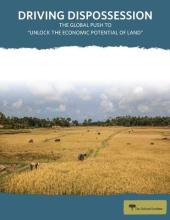/ library resources
Showing items 1 through 9 of 5035.The accelerated development of new urban areas has an impact on changes in the spatial use and complexity of ecosystems.
A framework was developed to elucidate (1) the drivers of land degradation, (2) pressures, (3) local impacts and vulnerabilities and (4) adaptation strategies.
The complexity of spatial use has an impact on poverty and the development of slum settlements towards a decrease in environmental quality.
The state owns over 80% of the land in Sri Lanka. The remainder is owned by private parties.
This paper is an abridged version of an earlier scoping study entitled Sri Lanka Country Report: Land Watch Asia Study prepared in 2010 by the Sarvodaya Shramadana Movement through the support of the International Land Coalition (ILC).
Coming two years after a political transition from post-war authoritarianism, this Shadow Report to the United Nations Committee on Economic Social and Cultural Rights is framed in the backdrop of two concurrent processes of ‘transformation’ currently underway in Sri Lanka.
The report answers the following questions:
1. Is perpetual fee simple ownership of real property permitted? If not, what are the principal forms of ownership, or other principal form of ownership, of real property?
The land is an integral part of every state. Especially land has sacred and cultural value in most of the Asian traditions apart from its social and economic value. Sri Lanka is an island state which has 25,330 sq.
Driving Dispossession: The Global Push to “Unlock the Economic Potential of Land,” sounds the alarm on the unprecedented wave of privatization of natural resources that is underway around the world.
Paginação
Land Library Search
Through our robust search engine, you can search for any item of the over 73,000 highly curated resources in the Land Library.
If you would like to find an overview of what is possible, feel free to peruse the Search Guide.







